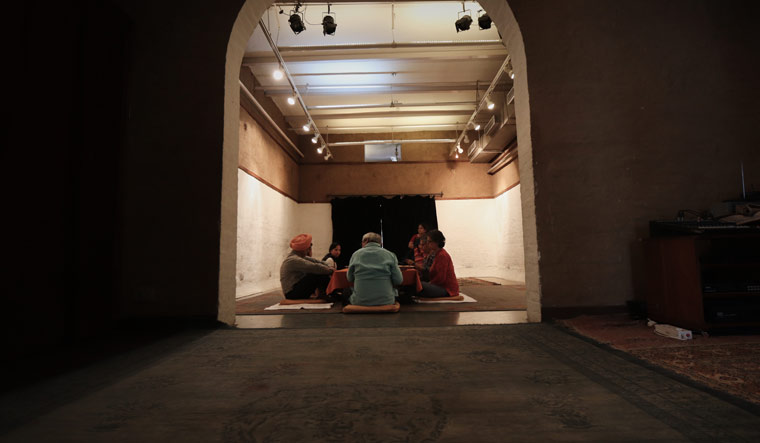It is not so hard to eat alone. We invariably have a book, TV or a phone for company. But how painful is eating silently? Vietnamese peace activist and Zen master Thich Nhat Hanh says we can overcome our fear of silence and quietude by practicing mindfulness. This applies to eating as well. Silent eating is a code of behaviour in India existing since Vedic times. Taking in the fragrance of the food, being consciously aware of every morsel, chewing it to a state of dissolution, staying focused on the food and minimising waste without a whine or a whimper is food well eaten. It can help cultivate peace and serenity within.
Obviously, we are not mindful eaters. In our hard-charging urban lives, Food Meditation might sound like just another wellness buzzword. But Ananda Anaam has been holding silent eating gatherings for the last 10 years in Delhi and every time, he says, the experience is new. "This is not therapy or a workshop or some kind of a treatment. Just like only a healthy person can do yoga, this meet is also for healthy people. Anyone who is sick cannot come,"says Anaam who conducts a series on Food Meditation once every month on the first floor of a quaint building in the heart of Delhi's commercial nerve centre in Connaught Place. In The Attic, one is transported to an oasis of calm and tranquility.
For this month's session, there is a yogi from Rishikesh in attendance who sits at the head of a long, tatami-like table set-up surrounded by sitting mats. The menu for the day is a simple vegetarian meal of kadhi with pakora, brown rice, kundru (a summer vegetable full of vitamins and beta carotene) and mixed salad along with coriander chutney and chapati, followed by meethi boondi for dessert. Served on plates made of sal leaves, the yogi and the host quietly go around serving the freshly prepared dishes to guests seated on the floor around the low-rise table. With no standing instructions, the visitors gingerly begin eating with their hands. Footsteps echo in the silent chamber which is swathed in a soft orange glow. The venue is a curious amalgam of proscenium architecture, with a Romeo-Juliet like balcony on a wall, and an intimate art gallery inclined towards paintings. Soothing notes from a flute come wafting in from a distance. Some guests eat with their eyes closed, some wear a distant look in their eyes while others are completely engrossed in their food. They don't look up from the plate.
Asked about her experience, one of the guests who ate with her eyes closed, attests to a feeling of resonance. "I was focused on the plate. I ate according to the right order. First the salad, then the roti, followed by rice. I was paying attention if my stomach is full or not, how energies were passing on. I was mindful of not making a mess, not wasting a speck. I could smell the fragrance of the rice..I was in a bliss mode," she gushes. Later the yogi, who does not take oil, sugar, milk or salt in his daily diet, is inundated with pressing queries. "What is the optimal level of sleep? Why is it important to express anger and rage? How do I stop eating mindlessly, even when I am not hungry?"
As Anaam later summarises, "Many a time people say they are coming, but they don't show up. Only people who are slightly mindful of their actions, they reach."



